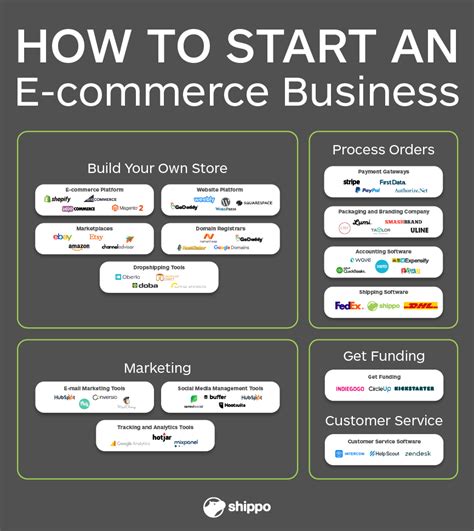How To Start An Ecommerce Business: A Step-by-Step Guide
Starting an ecommerce business can seem daunting, but with a well-structured plan and the right approach, it can be a rewarding venture. This guide breaks down the process into manageable steps, helping you launch your online store successfully.
1. Validate Your Business Idea
Before investing time and money, validate your idea. This crucial step ensures there's actual demand for your products. Market research is key. Ask yourself:
- What problem are you solving? What need does your product fulfill?
- Who is your target audience? Define their demographics, interests, and online behavior.
- What's your competitive landscape? Analyze existing businesses offering similar products. What are their strengths and weaknesses? Can you offer something unique or better?
- Is there sufficient demand? Use tools like Google Trends to gauge search interest in related keywords.
Strong market validation minimizes risk and increases your chances of success.
2. Create a Business Plan
A solid business plan acts as your roadmap. It outlines your goals, strategies, and financial projections. Include:
- Executive Summary: A brief overview of your business.
- Company Description: Your business's mission, vision, and values.
- Market Analysis: Your market research findings.
- Organization and Management: Your team structure and roles.
- Service or Product Line: Detailed descriptions of your offerings.
- Marketing and Sales Strategy: Your plan to reach your target audience.
- Funding Request (if applicable): How you'll finance your business.
- Financial Projections: Projected income statements, cash flow statements, and balance sheets.
3. Choose Your Ecommerce Platform
Selecting the right ecommerce platform is vital for your store's functionality and scalability. Popular options include:
- Shopify: User-friendly, with a wide range of apps and themes. Ideal for beginners.
- WooCommerce: A WordPress plugin offering flexibility and customization. Requires more technical knowledge.
- Magento: A powerful platform for large businesses with complex needs. Steeper learning curve.
- BigCommerce: Robust features and scalability, suitable for growing businesses.
Consider factors like ease of use, scalability, pricing, and available features when making your choice.
4. Source Your Products
How you source your products depends on your business model:
- Dropshipping: You don't hold inventory; the supplier ships directly to customers. Lower upfront costs, but lower profit margins.
- Wholesale: You purchase products in bulk from a supplier and store them yourself. Higher upfront costs, but potentially higher profit margins.
- Private Label: You create your own branded products. Higher risk, but potentially higher profit margins and brand loyalty.
- Handmade/DIY: You create and sell your own handcrafted goods. Requires skill and time investment.
Carefully evaluate each option based on your resources and business goals.
5. Set Up Your Online Store
Once you've chosen your platform, it's time to build your online store. Focus on:
- Professional Design: Create a visually appealing and user-friendly website.
- High-Quality Product Photography: Showcase your products with professional-looking images.
- Compelling Product Descriptions: Write detailed and persuasive product descriptions.
- Easy Navigation: Ensure customers can easily find what they're looking for.
- Secure Checkout Process: Prioritize security to build customer trust.
6. Marketing Your Ecommerce Business
Driving traffic to your store is essential for success. Consider these marketing strategies:
- Search Engine Optimization (SEO): Optimize your website and content for search engines.
- Social Media Marketing: Engage with your target audience on social media platforms.
- Paid Advertising (PPC): Run targeted advertising campaigns on platforms like Google Ads and social media.
- Email Marketing: Build an email list and send targeted email campaigns.
- Influencer Marketing: Partner with influencers to promote your products.
A multi-channel approach is often most effective.
7. Fulfillment and Customer Service
Efficient order fulfillment and excellent customer service are crucial for building a loyal customer base. Consider:
- Shipping Options: Offer various shipping methods to cater to customer preferences.
- Order Tracking: Provide customers with real-time order tracking.
- Return Policy: Implement a clear and fair return policy.
- Customer Support: Provide prompt and helpful customer support through various channels (email, phone, chat).
8. Analyze and Optimize
Regularly analyze your website's performance using analytics tools like Google Analytics. Track key metrics like website traffic, conversion rates, and customer acquisition costs. Use this data to identify areas for improvement and optimize your business strategies.
Starting an ecommerce business requires dedication and hard work, but by following these steps and consistently adapting to the ever-changing online landscape, you can significantly increase your chances of success. Remember that continuous learning and improvement are key to long-term growth.
